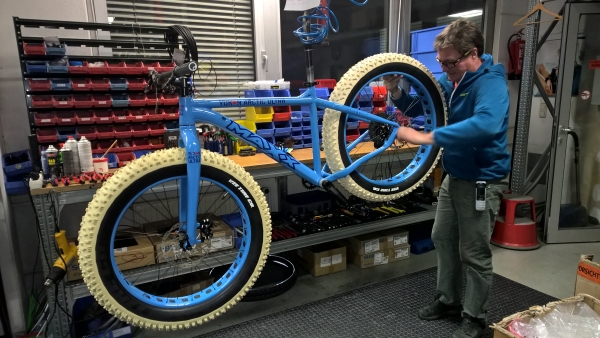Fatbiking in winter is an absolutely fascinating sport. In Alaska and in the Yukon the bikes with the extra wide tires have been around for quite a while. Now this fascination has reached other parts of the world, too. That’s why for some time already I have been toying with the idea to get a special edition MYAU/MLAU Fatbike made. And to learn more about these types of bikes and what specs these need to have to work in the extreme cold.
But it was not until Kevin Turek, who is a MTB expert, contacted me with the same idea that the ball finally got rolling. As luck would have it, with MAXX-Bike we also found the perfect company to execute our plans. They are market leading custom bikes experts already producing Fatbikes and immediately embraced the project. Uwe Matthies, the CEO himself has been a driving force and helped with all aspects involved. The result made us really proud.
Since it has been introduced, MAXX-Bike ambassador Florian Reiterberger and Bernhard Hasenbalg, both from Germany, won their MYAU 300 and MYAU 430 mile races on a special edition Fatbikes made by MAXX-Bike. So, right from the beginning MAXX-Bike got it right!
Before I introduce you in more detail to our MYAU/MLAU Fatbike here are some more general info on biking in the cold.


